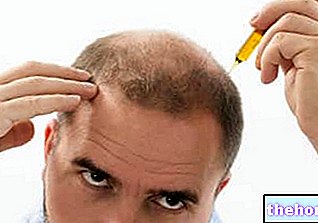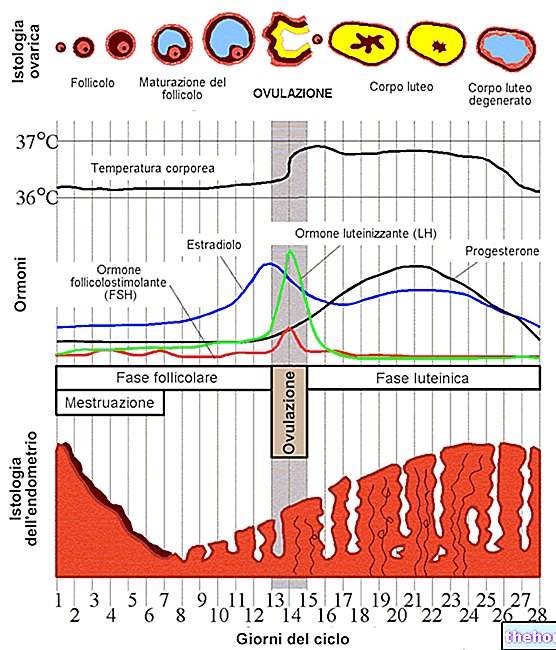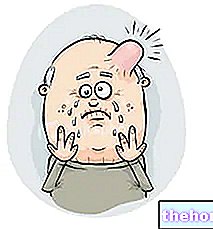Generality
To some extent, hair loss is an absolutely physiological event. Broadly speaking, the loss of 40-120 hairs per day is considered normal, based on the number of hair follicles still active and their growth cycle.

In fact, the number of hairs that fall out in a day can vary greatly from individual to individual, depending on a series of factors, such as:
- Gender (generally, men lose more hair than women over the course of the day);
- Quantity of hair - therefore of bulbs - present in the scalp;
- General state of health of the patient (as explained in the next paragraph, in fact, some pathologies can favor hair loss);
- Nutritional deficiencies;
- Types of hair care products used (the use of too aggressive products, in fact, in addition to damaging the scalp could also promote hair loss).
Causes
What are the causes and predisposing factors for hair loss?
Although hair loss - within certain limits - is considered a normal phenomenon, there are conditions in which hair falls out conspicuously. This is the case of menopause, for example, but also of pregnancy, stress, drastic diets, alcohol abuse, taking certain drugs, undergoing surgery, the spring period and in particular the autumn period. .
Excessive hair loss can also accompany various pathological conditions (thyroid disease, sunburn, iron deficiency anemia, malnutrition, physical trauma, cachexia, high fever and psychophysical stress).
All of these conditions manifest themselves clinically with an increase in daily hair loss.
However, the main cause of baldness remains androgenetic alopecia, although generally it is a very slow and progressive process.
Telogen effluvium
Unlike the animal ones, human follicles in good health have independent life cycles, with phases of growth and rest out of phase with respect to those of the adjacent bulbs; for this reason we are not aware of the continuous renewal process of our hair. When some of the conditions listed above take over, and in general a violent psycho-physical stress, the hair follicles are induced to pass en masse from the anagen (growth) phase to the catagen (involution) phase, with prolongation of the period of rest and fall (telogen). Thus there is a hair loss, numerically very high and qualitatively homogeneous, called "telogen effluvium" or "effluvium".
The consequences can be particularly alarming ... dozens and dozens of hair that accumulate on the pillow or remain in the hands and in the towel with which they are dried. Unlike androgenetic alopecia, in telogen effluvium, hair loss affects diffusely throughout the scalp, including the sides and back of the head. Fortunately, in most cases in which unfavorable genetic predispositions are lacking, there is a subsequent and almost complete regrowth.
Of the 100 hairs normally lost every day - out of the over 100,000 present on average in the scalp - about 10% are in the telogen phase (resting); when effluvium occurs this percentage rises to 30%.
There are two types of telogen effluvium: the acute type and the chronic type.
Acute telogen effluvium is characterized by "sudden and conspicuous hair loss and finds its main cause in particularly intense stress situations, but of short duration (as can occur, for example, in the event of accidents or bereavement). in fact, they would cause an arrest of the cell division that brings the hair from an anagen growth phase to the telogen phase.This type of effluvium generally lasts two or three months and usually resolves spontaneously.
Chronic telogen effluvium, on the other hand, can be triggered by causes of different origins and nature, such as, for example, anxiety disorders, nutritional deficiencies, drug intake, the presence of particular types of pathologies, endocrine disorders, etc. This form of The effluvium can last for months and sometimes for years and does not resolve spontaneously as it happens, instead, with the acute form. Therefore, with the passage of time, the patient will find himself with an increasingly lower amount of hair which will tend to decrease further with the spend some time.
Anagen effluvium
On the other hand, there is also an anagen effluvium, in which the particularly marked fall involves hair still in the growth phase. The phenomenon occurs within a few days of the triggering cause, while in the fall from telogen effluvium the causative factor can precede hair loss. even a few months.
Treatment

When the amount of hair fallen daily becomes excessive, then it is time to worry and a consultation with a doctor specialized in this area (the trichologist) is necessary.
First, the doctor will have to establish the cause of the conspicuous hair loss in order to proceed with the most appropriate treatment for each case.
In the case of acute telogen effluvium, the most effective treatment consists in "removing the cause that caused it"; therefore, it is necessary to act on the stress that gave rise to everything and wait for the effluvium to resolve spontaneously.
In the case of chronic telogen effluvium, however, the trichologist may decide to resort to the topical use of corticosteroid drugs.
If the hair loss is caused by other causes (androgenetic alopecia, alopecia areata, etc.), it will be the doctor's responsibility to diagnose them and prescribe the appropriate therapy to the patient (for more information: Androgenetic alopecia - Alopecia areata - Female Androgenetic Alopecia).

















.jpg)










